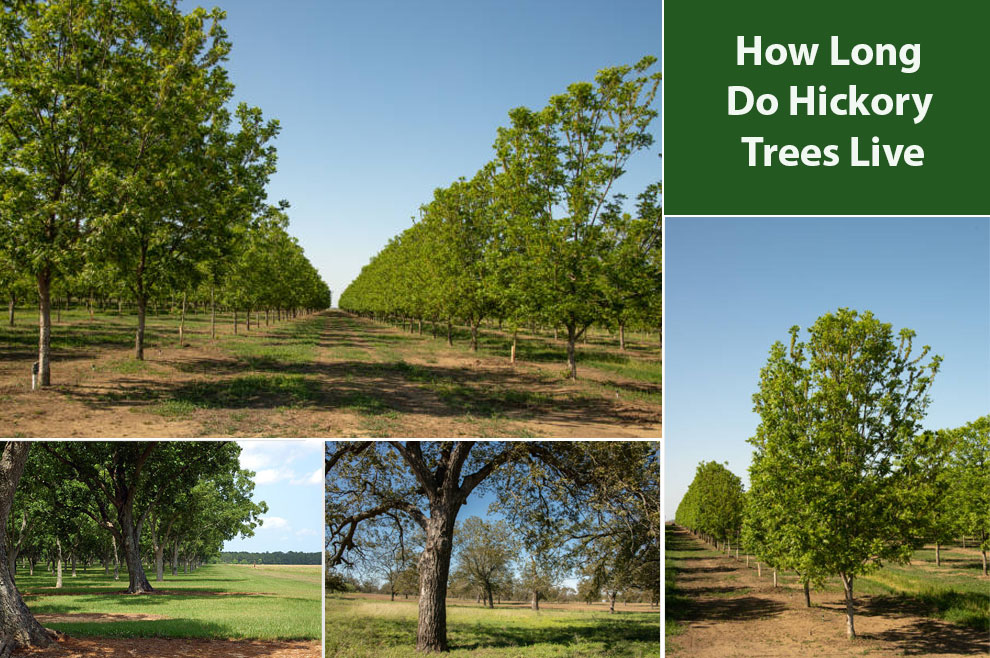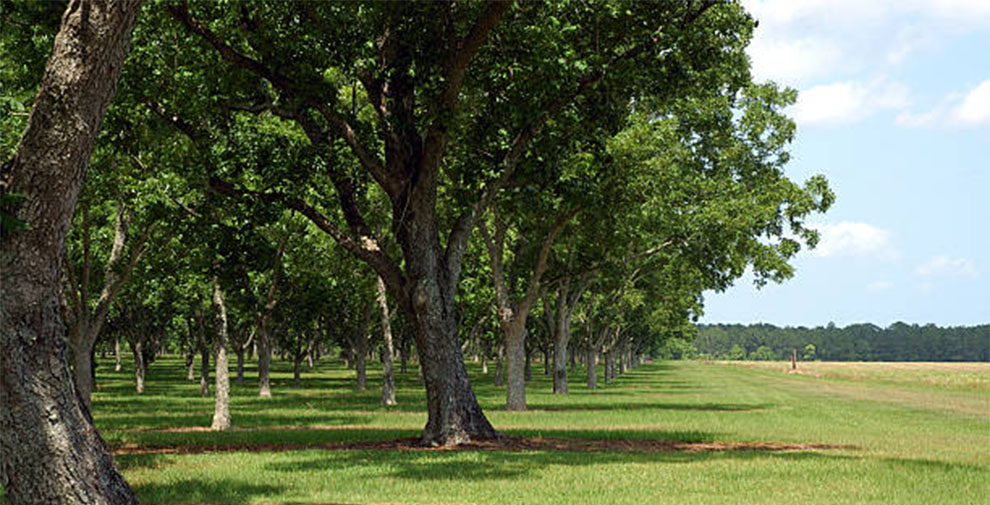How Long Do Hickory Trees Live – Glorious Hickory Tree Lifespan!
These trees live nothing short of a hundred years to say the least…

Belonging to the Carya genus, hickory is a member of the walnut family. They are handsome, strong trees. Native to North America, these canopy trees are prevalent in eastern North America, but many other hickory tree species are common in Asia, Africa, and Europe.
Even though hickories have a slow growth rate, they grow to become large trees, making them a little out of place in urban settings. But fortunately, the long hickory tree lifespan of a 100+ years makes it all worth it.
Even though there are many fast-growing shade plants, many people still prefer hickory trees because of the many benefits and low maintenance habits. It is one tree that lives for many years. It can indeed be a blessing in disguise for your children and grandchildren.
How Long Do Hickory Trees Live?
Typically, the hickory tree lives for a very long time. On average, most hickory tree species live for two centuries. However, some species like shagbarks continue to produce seeds for three centuries. These are stable hickories.
Please note hickories are susceptible to attacks from some pests and diseases, such as hickory bark beetles and canker rot fungus. It can intervene with tree’s growth. So, be careful and regularly take measures to shield your plant from pest or insect attacks and diseases.
How Big Do Hickory Trees Get?
Even though hickory trees have multiple uses, their dominance as shade trees is unprecedented because of their large spread.
Typically, most hickory trees grow between sixty to eighty feet tall. They also have an expansive spread of around forty feet. Thus, given the vast hickory tree lifespan, you can enjoy sitting under these shade plants for many generations.
How Can I Tell How Old My Hickory Tree Is?

Credits: Purdue University
Unfortunately, you may be unable to accurately tell the hickory tree’s age. But, you can find out its approx. age by a method provided by the International Society of Arboriculture (ISA). All you need is the tree diameter at breast height (DBH). DBH is the tree’s diameter 4.5 feet above the ground level.
DBH = circumference of the tree/3.14 (Pi)
Approx. tree age = DBH*Growth Factor Given to The Tree (it’s unique for every tree and you can find it online)
Why Are My Hickory Trees Dying? Can You Revive Dying Hickory?
You already know how long do hickory trees live, but what if they start dying before their age? There could be multiple reasons for dying hickory. It is susceptible to catching diseases. So, to ensure that these diseases do not cease the plant’s life, be cautious.
Below, we will address the disorders that prevalently affect the hickory trees one by one and ways to tackle them:
i. Anthracnose
It is a prevalent fungus, attacking the hickory trees that leave small spots on the leaves. The spots have purplish coloring and irregular shapes on the top with brown leaf color on the underside.
This fungus can result in defoliation that curtails photosynthesis and snatches the tree’s vigor. Similar to other fungal infections, even anthracnose thrives in wet conditions. So, if you do not want to kill your plant, you must avoid this infection by leaving ample space between the trees to ensure seamless ventilation even after heavy rains.
In addition, you must ensure that the soil has good drainage and that you do not overwater it.
ii. Canker Rot
It is one of the most severe hickory diseases. It is a fungus causing cankers to develop around the dead branches. This unattractive fungus has a fast spread and affects the hickory tree lifespan and can eventually kill the tree. You can prevent cranker rotting by employing sterile pruning techniques.
iii. Leaf spot
Other fungi like phyllosticta, coniothyrium, cercospora, hendersonia, elsinoe, mycosphaerella, cristulariella, monochaetia, microstrom, marssonina, sphaceloma, Septoria, and gnomonia, might also cause similar leaf spots in the trees.
When these fungi attack the plants, it results in purple, brown, red, tan, white, or gray spots on the leaves. Typically, these spots emerge as tiny dots but grow larger over time. You may also note them as the tan or gray color inside and dark or black brown ring on the exterior.
If the infection is minor, it will not kill the plant and requires no treatment. But, if the condition is severe, it might cause a leaf drop. Hence, we recommend spraying the Hickory trees with horticultural oil or a fungicide to combat the severe infections.
But, you can avoid fungi infections if you plant the hickory trees in a spot with good ventilation.
iv. Root rot
Excessive irrigation or poor soil drainage can be a breeding ground for the fungi, and they may cause root rotting. Hence, growers need to avoid planting their hickory trees in compacted soil. In addition, if you plant the tree in unusually wet weather, that may cause root rotting.
However, this situation is beyond your control. Root rotting deteriorates the plant’s foliage health and intervenes with the growth. In only a short duration, it may kill the hickory trees.
v. Trunk Rot
Hickory trees are also vulnerable to fungi that may cause trunk rots. The hickory trees with logging or fire damage often rot. Unfortunately, trunk rot is not curable and usually kills the tree. It may also make the hickory trees a falling hazard.
To avoid this, you must offer good damage protection and take measures to keep the trees healthy and resistant to trunk rot fungi.
Do Hickory Trees Fall Easily?
No, they do not. Hickory trees are famous for their resistant and solid exterior. Its large taproots make it hard for the wind or storm to blow them over or lift the sidewalks.
Summing up…
Courtesy of how long do hickory trees live and several commercial uses, these trees are a valuable addition to any landscape. Of course, they are slow-growing, but their unparalleled beauty, edible nuts, wide use in the timber sector, and prevalence as shade trees make them worth it all.
